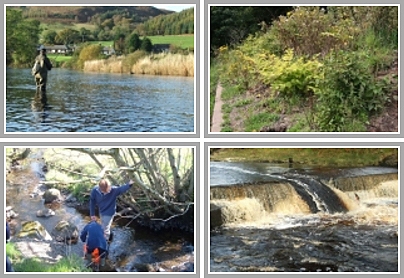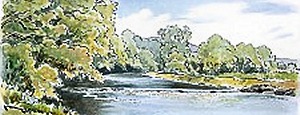The video describes how the run times of the types of Tweed Salmon have changed over the centuries. The information comes from a long term study that was made by the Tweed Foundation using historic Tweed Salmon catches, mostly from the netting stations. It shows that the kind of changes that we are currently seeing in Salmon runs have occurred in the past and postulates that they may be part of a very long term, periodic cycle. The video is an updated version of a talk given to the River Tweed Commission by Dr Ronald Campbell on 5th December 2016.
While this clearly relates to Tweed salmon and grilse, similar trends can be seen in the Tay, Spey and Dee salmon runs. Here in Ayrshire, we don’t have the historic data to allow such comparisons to be made but if its is happening on the east coast, then it is highly likely that it happens on the west too. It seems clear that there are wide fluctuations between grilse and salmon and indeed there appears to be cycles extending to over 50 years and therefore we should consider this when making assessments of our salmon stocks at all times. Essentially, determining a base line for our stocks should not mean expectations are set too high (or too low) but without the historic data that the Tweed and other large east coast rivers have, it is impossible to be precise and perhaps we should be guided by common trends highlighted within their data.
Of course there are other factors that impact salmon populations on the west coast such as Aquaculture and it is perhaps these that are tipping the balance against wild salmon in rivers up and down the country.
This is a very interesting 1/2 hour film and certainly worth watching.


The problem of trying to draw conclusions, or extrapolate into the future, without long term statistical information. How far back do records go for Ayrshire rivers?
Not that long Martin. We really can only go back to when the Government required records to be submitted in the 50’s. However, the $ big east coast rivers can go back much farther and all seem to corroborate the cyclical theory to a large extent and therefore, I wouldn’t dismiss this as a possible explanation, at least in part for our recent changes in local salmon demographics (from grilse to MSW). Time will tell.
Why can pink cohoe kings Pacific salmon sustain all the netting every year don’t 4get the bears they still cum back millions at a time but Ayrshire rivers can’t even get a decent run when a water is perfect 4 a fish 2 run ?
Craig, I think North American fish stocks have declined significantly too. If you take the Stinchar as an example, last years runs were excellent. They have changed from grilse to MSW (90:10%) but there was no shortage of fish in the river and every beat reported that. Their problem was that fish were not taking rather than a lack of salmon.